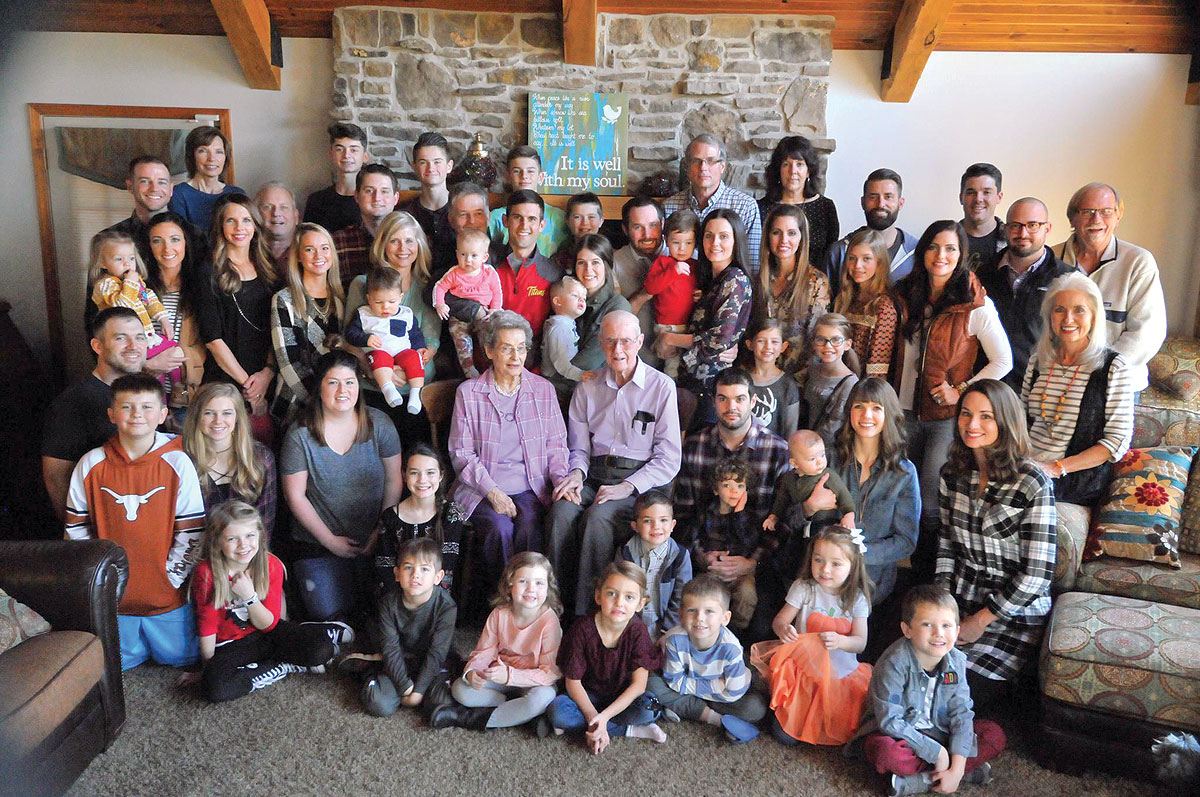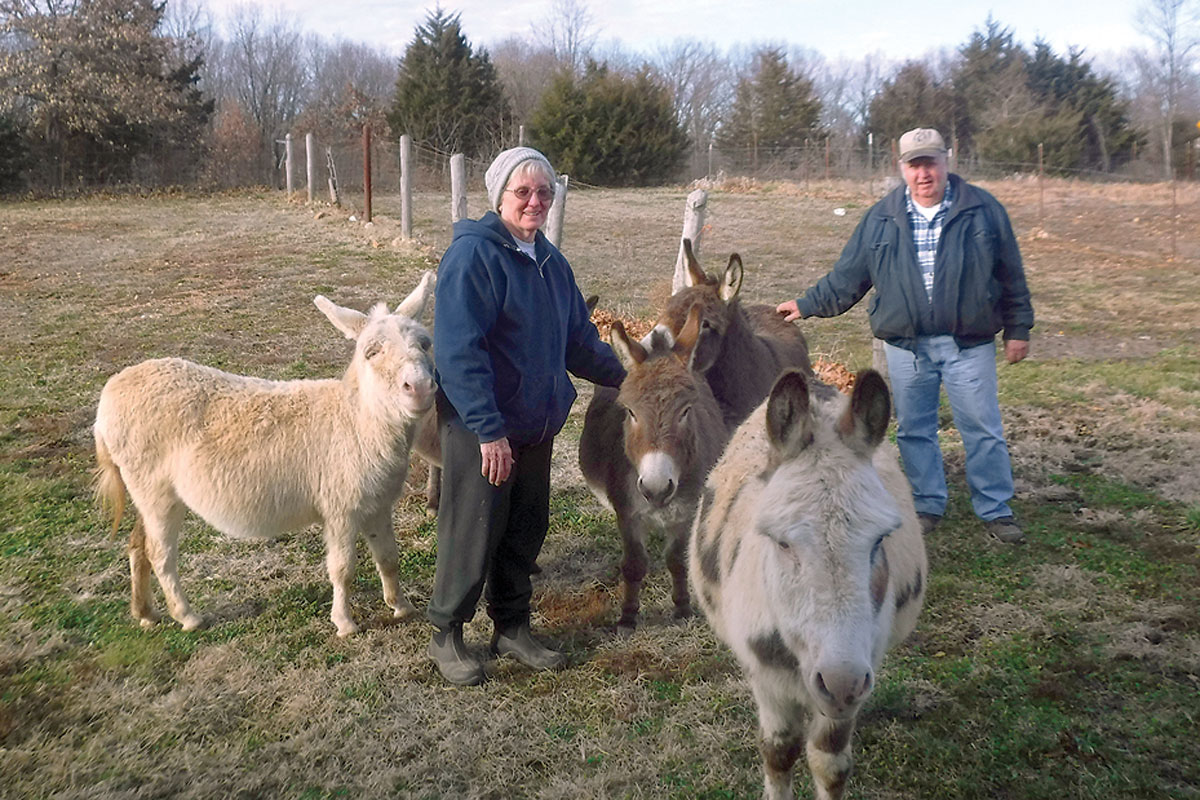
Top Notch Farms strives to improve soil conditions and maximize production
Top Notch Farms in Carthage, Mo., has undergone several changes since Hollis Osborne started in the 1950s, but the goal of maximizing production in an efficient and sustainable manner has remained the same.
Jared Osborne, Hollis’ grandson and general manager of TNF, said Hollis started in the early 1950s with a feed store south of Neosho, Mo., added a turkey growing operation, then switched to a chicken layer operation. At one time, it was Missouri’s largest chicken laying operation with 70,000 chickens in 10 houses. Hollis is also credited with the development of a more efficient cage system that made egg collection easier.
“In 1974 or 1975, he separated the chicken operation and Top Notch Farms; the chicken operation turned into Moark Productions,” Jared explained. “In 2006, my family sold Moark to Land O’Lakes, and when we sold it was the second-largest egg operation in the United States. Moark was really the main focus of the farm at the time, and the land and cattle were just a hobby.”
In the early to mid-1990s, under the leadership of production manager Jerry Compton, the second generation of his family to be the production manager of TNF, production moved toward crops.
Today, TNF leases and owns about 6,000 acres where it raises corn, wheat and soybeans. The farm also grows 500 acres of alfalfa and runs about 400 head of cattle. There are currently eight full-time employees.
“We own about 40 percent of our cropland, with the other 60 percent leased or crop shared,” Jared said, adding that a large portion of the crop share is family-owned land.
TNF sees improving soil conditions as a benefit to its farming operation, utilizing no-till practices and cover crops when possible, and closely monitoring soil conditions to enhance crop production.
“I tell people I geek out on soils,” Jared said. “We soil test every other year, but we look deeply at the soils and the structure to figure out what is best of this land. If we get a piece of ground that has been hayed a lot it the past and has low fertility, we use a lot of chicken litter, which brings in a lot of microorganisms. Once we get to the point where levels get a little too high, we switch over to commercial fertilizers. We also look a lot at erosion and try to keep that down as much as possible.
“When we can, we like to do a cover crop, but with the rotation, we do it has a cover crop in it because we plant a lot of wheat. We don’t always get in a cover crop every year, but our wheat, per se, is a cover crop. The knowledge base out there is that by increasing organic matter and putting back nutrients, the soil will stay viable. There’s a lot of research about tactics and different crop rotations that help soil health, but the problem is taking that new technique and knowledge and actually putting it on a large scale. We’re looking deeply at studies to find what’s best because the better we can do at helping soil health, the better farmers we will be and the more profitable we’ll be.”
Jared added that growing crops in Southwest Missouri is different than in other parts of the country because of the climate and growing seasons.
“We’re a little hotter and dryer in the summer months, but our inputs are typically a little lower,” he explained.
Each piece of land is managed according to its needs, and fields not considered “prime” row crop acres can be productive, if managed correctly.
“Some might be kind of rocky and have a bit of slope to them, but as long as you understand that and manage for that, it is still productive ground,” Jared said. “There’s a lot of ground people say isn’t farmable, but all it takes is understanding its limitations.”
The cattle operation is a commercial Angus herd and the farm has recently begun backgrounding calves and retaining ownership through the feedlot.
“We changed our genetics and started going with quality-based genetics with our goal being to get the highest number of prime cuts possible,” Jared explained. “In the past, with the lower quality genetics, it made more sense to sell at weaning. We bought some heifers that have the numbers we were looking for and replaced several bulls with the higher-quality bulls.”
TNF utilizes natural cover with both fall and spring calving. Calves are backgrounded to about 1,000 pounds on wheat pasture before being sent to the feedlot.
“We use some of our corn in our cattle, but with the value of the pasture we put in wheat, we’re getting a little more protein than we need, but it’s a cheap source of feed. We will supplement them with about a pound to a pound and a half of corn. Once that wheat pasture goes dormant, we will supplement with some distillers and other feed products. We can produce corn a lot cheaper than we can buy it.”
Hollis began stepping away from the farming operation in the mid-1990s, eventually turning over ownership to his four children – Holly Adams, Karen Downs, Ronnie Osborne and Paul Osborne.
At the age of 89, Hollis may no longer play an active role in the operation of Top Notch Farms, but Jared said his grandfather still enjoys the farming way of life.
“It was always a hobby for him and so I think he just likes to sit back and watch it grow,” he said. “It feels good to have an operation to that is going to be passed on to the next generation and that’s the goal of the current owners. I would like to see it grow to where the next generation, my generation, can get a good return on their ownership. That would be a good return their ownership; I that would be a win in my book.”






